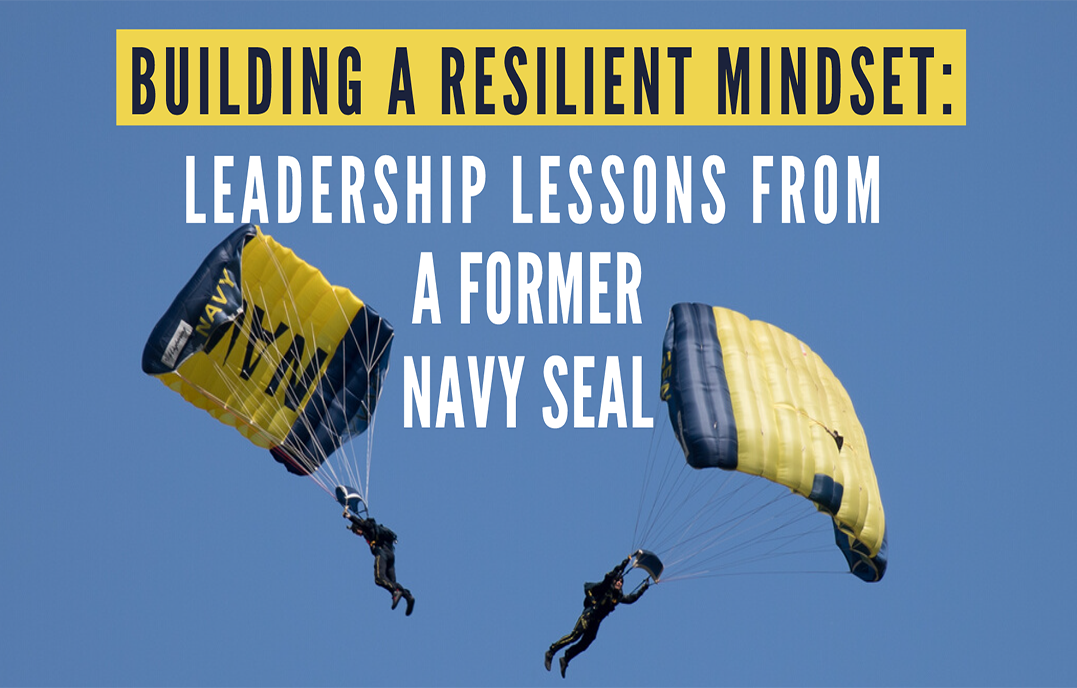As the country heads toward reopening, we won’t just be able to toggle back to business as usual. Every employee will be returning to work with varying levels of anxiety. Some may have lost a person close to them. Some may feel fatigued from living through weeks of uncertainty. Others may have survivor’s guilt if some of their co-workers were recently laid off or furloughed.
I discussed this topic last Thursday when I interviewed Retired Navy SEAL Officer Lance Cummings on building a resilient mindset (watch the recording here). Using concepts and techniques gained from his 30-year military career, Cummings shared what kind of mindset is necessary for leaders to help their teams deal with the trauma of COVID-19 and as they return to work.
Below is a sampling of the leadership concepts from our interview that leaders can apply today as we prepare for businesses reopening:
Make space for decompression
When returning from a war zone, operators need a transition period to adjust to the new reality. We transition back carefully, with at least one stop along the way to decompress and discuss how to adjust smoothly and smartly. We solicit help from medical and psychological professionals. This facilitates the transition and emotional trauma, especially if you’re returning with fewer than you deployed with.
Good leaders help prepare for both the deployment and return by showing compassion for those who need a little more help with transition.
Acknowledge and deal with trauma
Acknowledge that there will be trauma within the ranks, and it will be expressed or compartmentalized in different ways. The emotional aspect of losing a loved one, or living in fear of losing someone, is tremendous. It should be verbalized that assistance is available and that there will be no stigma about taking advantage of emotional counseling.
Situational awareness is a perishable skill, but if you can watch others from an objective position, body language and work habits will telegraph masked stress.
Provide clear guidance and lead by example
There may have been downsizing within the company. That can’t be ignored. People have a right to know where they stand in the hierarchy and why. An employee’s perception can be different from their boss’, but this gap can be minimized with open communication. Sometimes we can be too ambiguous, and the message isn’t clear.
Leadership by example cannot be overstated. If the Commanding Officer of the team is attending daily COVID-19 screenings, the troops are less likely to complain about it.
As many of us pivoted from in-person to online meetings during this quarantine, we can leverage the gifts of stripping away the office hierarchies that create distance among people. From watching kids run amuck in the background, to hearing dogs bark, to noticing your colleague is a U2 fan by virtue of the Bono posters hanging on their walls, we can lean into the fact that we know each other even better as human beings. We’ve created new bonds of trust. Let’s carry this trust forward and emerge as a more resilient team.
How are you helping your team pivot while dealing with the trauma of what they’ve just gone through?
Driven by the premise that excellence is the result of aligning people, purpose and performance, Center for Executive Excellence facilitates training in leading self, leading teams and leading organizations. To learn more, subscribe to receive CEE News!




